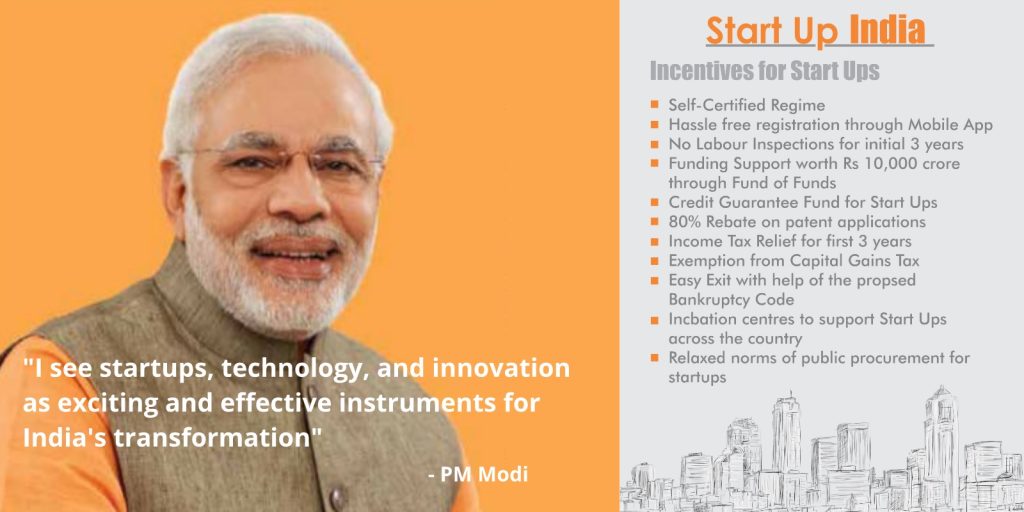Pakistan is often compared with India due to the similarities of the two nations. For the startup ecosystem, this is no different. Pakistan’s startup ecosystem is flourishing and promises a great deal for the near future even with the challenges many startups face due to an array of reasons. This article aims to look into the Indian Startup ecosystem for lessons on what has worked and what hasn’t.
With a whopping seventy-seven acquisitions in the first six months of 2016, and others like an Indian fintech PayU acquiring CitrusPay for a cool $150 million, CommonFloor – an online real estate company like Zameen – netting Quickr for $200 million, no doubt India’s startup ecosystem is more mature and aggressively progressing than Pakistan’s. The reasons behind this relative progress are many but most likely is the fact that the focus towards the growth of the respective industry started way before in Pakistan did. However, there are varying factors to this which will be discussed below. As with most things of national scale, success is based on a web of support that allows the initiative to grow. In the case of the Indian startup ecosystem, home to currently 10 unicorns – valuation of over $1billion, the largest factor is the governmental support.
Photo Credits: https://www.inc42.com/ & http://byjus.com/
Governmental support allows initiatives to benefit from a variety of allowances but also a ‘stamp of approval’ which is particularly useful if something is alien to the population. As such, the StartUp India initiative, which includes an epic $1.5 billion fund, was introduced by the Govt of India to support the growth of startups by introducing a friendlier legislative approach, strong support, tax relief, and easy access to information. By making the changes, the Govt of India sets a firm and positive ground for the economy.
However, there are a couple of other factors which may act as support for the growth of the industry being national technological infrastructure and customer adoption. National infrastructure can include the technology available to utilise such as digital banking, mobile payments and similar. It may seem a small issue, but issues like receiving payments through PayPal are extremely important for a healthy business to flourish. Tied in with this is the customer adoption.
As a nation which is continually developing at an exponential rate, India has an internet penetration rate of 36.5 per cent / 17 per cent smartphone penetration (data from nucleas42), further, the internet usage is predicted to double by 2021. With such positive figures, naturally, the end-user would normally be more trusting in new technologies and quicker to adopt them due to past experiences. What the above has helped to deliver is a strong ecosystem with some popular startups like FlipKart and Freshdesk, along with a host of co-working space providers and investment firms.
Another aspect which may also benefit India is the good relationship with Silicon Valley, and that is the result of Indians holding senior positions in prominent Silicon Valley companies. Coupled with high levels of competent and trained workforce, this is fertile ground for recruitment and investment, which ultimately serves in growing the ecosystem.
What’s NOT going right in their direction?
As with all things, there are challenges to be anticipated, and currently, it seems, India is going through a slow-down generally attributed to lowered investor interest. 2016 in comparison saw an average thirty-nine per cent drop in funding according to inc42.com which may be a result of high startup expenditure without the required return on investment (ROI), with many shedding jobs, and some shutting down. Indian retail entrepreneur Kishore Biyani, in September 2016 stated that most startups lack long-term vision and were created only to be acquired. This is worrisome indeed. Understandably, there will be a point where growth will flatten but this scenario teaches an important lesson — investing wisely.
By both investors and company seniors’ help reduce the risks for a struggling company. A similar lesson can be learnt within Pakistan. As we are behind India and one would say, we are still in ‘growth’ stage, we have the chance at reviewing how we can minimise risk on all levels. Investment is normally a positive catalyst, but in the case of over-investment in an economy, it risks having an opposite effect than the one intended. Saying this, an interesting development in India earlier this month shows there are some people still pushing for the economy and hoping India converts its top startups to unicorns very soon. For that, a fund of $100M has already been set up by two Indian tech veterans, Sanjeev Aggarwal (Helion ventures) and Nandan Nilekani (Infosys).
Final word…
India serves as a great testing ground for Pakistan. Whilst we always learn from around the world, India’s demographics match Pakistan’s much more closely than other nations. It is important to note the benefit that the initiatives of the Govt of India have provided the startup ecosystem, and resultantly seen some great output.
Pakistan on the other hand, over the last few years has definitely seen a positive shift in focus towards the startup ecosystem, which is visible on many fronts, but seems to be limited to only some parts of the country. Further, improvement in the infrastructure is also on the rise, but still far behind India. With time, the customer adoption is sure to rise, but first it is believed the nation needs further support for startups by offering an initiative similar to Startup India.












